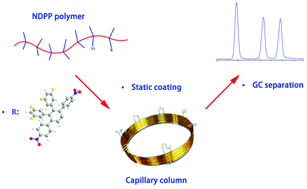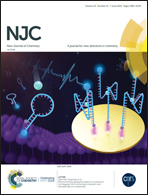Nitro- and fluoro-substituted tetraphenyl–phenyl grafted polysiloxanes as stationary phase for capillary gas chromatography
Abstract
This work reports the synthesis of 2,5-di(4-nitrophenyl)-3,4-di(3,5-difluorophenyl)phenyl grafted polysiloxane (NDPP; containing 12.4% 2,5-di(4-nitrophenyl)-3,4-di(3,5-difluorophenyl)phenyl groups) for gas-chromatography (GC) separation. Thermogravimetric analysis revealed a 2% loss of NDPP polymer weight at 385 °C. Chromatography analysis of alcohols on the NDPP column showed that the NDPP stationary phase had good thermal stability. Column efficiency was 3460 plates per m for 10 m column and 3700 plates per m for 30 m column, as determined by naphthalene at 120 °C. The stationary phase had medium polarity as confirmed by McReynolds constants. Abraham system constants indicated that the major interactions between NDPP and solutes were dipole–induced dipole interaction and hydrogen-bonding force. According to π–π stacking, dipole–dipole, dipole–induced dipole, and hydrogen-bonding interactions, the NDPP stationary phase had advantageous resolving ability for isomers. The NDPP stationary phase also showed excellent selectivity for multicomponent mixtures, substituted benzenes, polycyclic aromatic hydrocarbons and their derivatives, and ethers.



 Please wait while we load your content...
Please wait while we load your content...